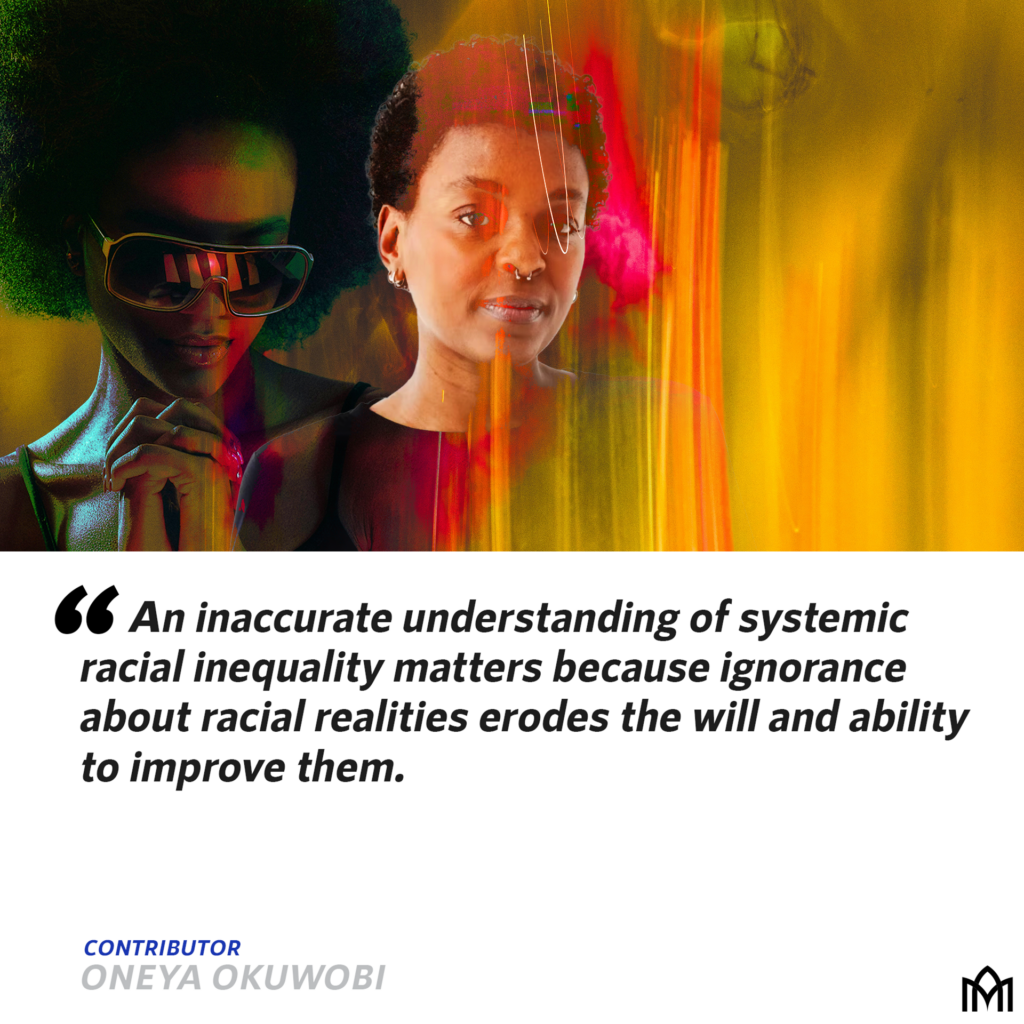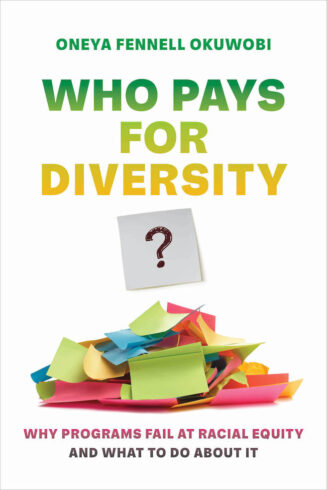I Set Out to End Racism and Failed
Who Pays for Diversity in Multiracial Churches?
I set out to end racism and failed.
It was 20 years ago that a book called Divided by Faith set the agenda for a significant part of my life. The key finding of the book is that segregated churches created disparate racial attitudes and outlooks among Black and white Christians. The authors, Michael Emerson and and Christian Smith, hypothesized that Christians coming together across racial groups would create more accurate understandings of racial inequality that could help to combat it. I immediately latched on the message of bringing people together, creating curriculum, speaking at churches and conferences, and arranging my own life and relationships in such a way that this would become true.
I was not alone in this. Church leaders and denominations, particularly among Conservative Protestants, eagerly embraced churches of all nations. Networks were born and conferences held to direct the creation of multiethnic/multiracial/racially diverse churches. Through this emphasis, and the demographic change of neighborhoods surrounding churches, these efforts bore tremendous fruit. The number of Conservative Protestant churches with fewer than 80% of congregants from the same racial group rose dramatically from 7% to over 20%.1Dougherty, Kevin D., Mark Chaves, and Michael O. Emerson. 2020. “Racial Diversity in U. S. Congregations, 1998–2019.” Journal for the Scientific Study of Religion 59(4): 651–62. Change came faster than anyone could have imagined in terms of the shifting demographic reality of multiracial churches. But the other promised changes–alterations in racial attitudes to recognize systemic inequality, working together to eliminate racial inequities, and stronger social networks helping equalize the distribution of resources–were nowhere to be found.
Early warnings that something might be amiss came through sociologists like Dr. Korie Little. Her book, The Elusive Dream, showed that multiracial churches largely persisted to the extent they were comfortable for white people. Even within these multiracial churches, racial inequality was the order of the day with the desires of white congregants winning out in disputes, regardless of their proportions within the church.
Another indication that something was wrong came ten years into my work, the same year I entered graduate school to become a sociologist. A new article, United by Faith?, showed that indeed racial attitudes were different among attendees of multiracial churches, but in the wrong direction.2Ryan J. Cobb, Samuel L. Perry, and Kevin D. Dougherty. “United by Faith? Race/Ethnicity, Congregational Diversity, and Explanations of Racial Inequality.” Sociology of Religion 76(2): 177-198. Accessed at https://academic.oup.com/socrel/article/76/2/177/1636873 The authors found that instead of white congregants accurately understanding systemic racial inequality, Black and Hispanic congregants in these churches were less likely to recognize systemic racism themselves. This inaccurate understanding matters because ignorance about racial realities erodes the will and ability to improve them.
A scant year later came the 2016 presidential election. There’s nothing I can say about that which hasn’t already been said, so I’ll just affirm what sociologist Michael Emerson reported from his research at the time: “The election itself was the single most harmful event to the whole movement of [racial] reconciliation in at least the past 30 years.”3Sociologist Michael Emerson, quoted by Campbell Robertson in “A Quiet Exodus: Why Black Worshippers Are Leaving White Evangelical Churches,” New York Times. Originally published March 9th, 2018. Accessed at https://www.nytimes.com/2018/03/09/us/blacks-evangelical-churches.html
Finally, Barna’s 2021 report, Beyond Diversity, shed new light on the issues Black congregants have in multiracial churches. The report found they were less likely to be in leadership, less likely to be able to build relationships and feel welcomed, and more likely to experience racial slights than they were in monoracial churches.
An inaccurate understanding of systemic racial inequality matters because ignorance about racial realities erodes the will and ability to improve them. Share on X
Beyond research studies, I received first-hand information concerning the difficulties people of color were facing in these newly diverse churches. When conducting trainings at gatherings of multiracial church leaders, my conversations revealed an alarming trend. Over and over again, I would get lunch or coffee with pastors of color and hear the horror stories they experienced. Many felt they were brought in to display a Black or brown face but not really listened to. Others felt disillusioned by their church’s surface level commitment to congregants of color; a commitment that seemed to evaporate when it came to issues of racial justice. Still others found themselves out of ministry altogether after fractured relationships and health concerns took their toll. In all that had been written about the diversification of the church, I found there was an insufficiently acknowledged people cost. I set out to investigate it.
The result of this investigation is my new book, Who Pays for Diversity?. Shockingly, I find that nine out of ten of the pastors I spoke with have physiological signs of stress that they attribute to their experiences in churches focused on racial diversity. From physical symptoms of stroke to autoimmune diseases and constant headaches, these pastors are the ones paying for their churches’ desire to portray themselves as diverse.
The Main Costs of Diversity
There are three main costs of diversity that the pastors I spoke with blame for their symptoms.
- First are heavy work burdens. Pastors of color often must attend meetings, pose for pictures, or show up for services so that the proper level of diversity is displayed. While seemingly minor in isolation, these extra ‘performative’ asks week after week and month after month add up to an additional job and prevent pastors of color from accomplishing their base duties.
Take, for example, an Asian American pastor named Aaron Chu,4All names listed here forth are pseudonyms. who was asked to spend more than half of his working hours planning and executing services for the congregation. Chu was frustrated by this time demand because he was hired as a counseling pastor and thought he would spend most of his time in sessions with congregants. While being part of the services took away from his primary responsibilities, he was asked to be there for Asian representation on the stage during Sunday morning service. Having visible, diverse leadership was extremely important to the church’s ability to promote itself as a congregation of all nations.
- The second cost of diversity derives from how pastors of color perceive the rightness of their church’s actions, otherwise known as legitimacy. These pastors see how their church purports to be diverse to outside parties but face the daily reality of internal workings. The distance between the two creates feelings of guilt for pastors of color, disillusionment from being part of something that isn’t quite true.
These feelings of guilt take a toll. As Pastor Woods, a Black former resident at a southern megachurch told me:
“There are gonna be a lot of sleepless nights, and a lot of teary nights, and a lot of times where you live in this constant state of disappointment. You have the expectation of you wanting to see this amazing utopian experience, right? But the reality sets in…you’re going to have to come to grips with being acquainted with disappointment.”
- Finally, pastors of color experience their identity being subsumed to what their church needs for the image of diversity. This intrusion into identity makes it difficult for pastors of color to be themselves fully. One Latina pastor, who was desired for her churches’ racial efforts because of her ethnic identity, but minimized for her gender, experienced the bifurcation of her person this way:
“They didn’t know what to do with a woman like me. They want parts of me but not the whole of me. And I think that’s what we feel as women of color in predominantly white institutions–Don’t bring all of you. Don’t bring all of your experience. Don’t bring all of your gender. Just parts of you.”
Listening to the pain experienced by this part of the body of Christ, I can only conclude that not only have we not ended racism through the diversification of the church, but things have also gotten worse. The lives and ministries of these men and women cannot be collateral damage. They are not a sign of growing pains. They are a sign that we are on the wrong road. We must now stop and course correct before more people that God dearly loves are wounded.
Pastors of color experience their identity being subsumed to what their church needs for the image of diversity. This intrusion into identity makes it difficult for pastors of color to be themselves fully. Share on X
A Quest for Equity
So, what to do?
I suggest that we focus on equity before diversity. Equity means that everyone has what they need to succeed. If we create equitable churches and Christian organizations, diversity will surely follow. However, if we continue to change the demographics of our churches, but everyone doesn’t have what they need, harms will persist.
Creating equity for pastors of color requires dedicated action. There is much to do, but I suggest three steps to start:
- First, our churches must offer frank and frequent teaching about racial inequality, even when it makes people uncomfortable. Today, white practicing Christians are the group least likely to believe the US has even been historically discriminatory toward people of color. Lacking a common history, we cannot chart a common future. This teaching must not be the responsibility of pastors of color but fall equally on everyone.
- Second, church environments must be those where pastors of color can be fully themselves. This means neither being constrained to a version of themselves that will make white congregants and co-workers comfortable, nor being asked to display their racial identity in times and places that feel inappropriate to them. Annual assessments to listen to what pastors of color experience will help ensure that pastors of all races are being respected.
- Finally, equity would require the global church taking a serious look at the resources that advantage majority-white churches over majority-minority ones. How might a process of repair and restoration begin so that profits generated by histories of injustice are returned to the purview of pastors of color? Having equitable resources means that pastors of color would not feel obligated to stay in places where they are overlooked and undermined for the sake of a paycheck or health insurance.
I’ll never stop working to see racism in the church come to an end. The prayer of Jesus in John 17 is for our oneness, and it is that prayer I rely on to know that true change is possible. When the church models self-sacrificial love and subsurface unity, other organizations will have an example to follow. Until then, we must test our efforts–throwing out what doesn’t work, straining for what is better, and listening to each other along the way.
///
I suggest that we focus on equity before diversity. Equity means that everyone has what they need to succeed. If we create equitable churches and Christian organizations, diversity will surely follow. Share on X
*Editorial Note: Who Pays For Diversity? Why Programs Fail At Racial Equity And What To Do About It, written by longtime friend of Missio Alliance, Dr. Oneya Okuwobi, was recently released. We deeply recommend and support Oneya’s work, highly recommending her book for purchase! ~CK





